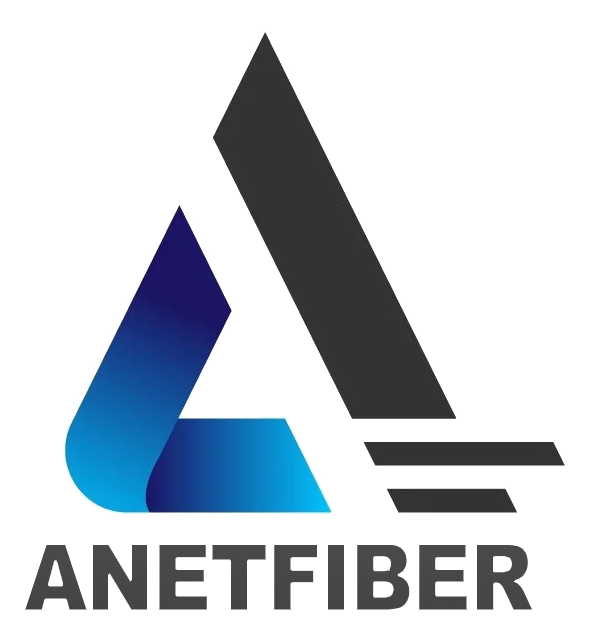12 Essential Maintenance Tips for Maximizing Fiber Optic Patch Cord Lifespan

Introduction to Fiber Optic Patch Cord Care
Fiber optic patch cords are crucial components in ensuring the smooth and efficient operation of network systems. Maintenance of these patch cords is essential for maximizing their lifespan and preserving their performance. In this blog post, I will share valuable insights into the importance of maintenance, its impact on the performance and lifespan of fiber optic patch cords, and practical tips based on my own experiences.
Understanding the Importance of Maintenance
Proper maintenance is vital for ensuring that fiber optic patch cords function optimally. Neglecting maintenance can lead to various issues such as signal loss, increased error rates, and even complete system failure. By implementing regular maintenance practices, you can prevent these problems and extend the longevity of your equipment.
Why Care Matters
Regular care and attention to fiber optic patch cords can significantly reduce the risk of signal degradation and equipment failure. Without proper maintenance, these delicate components are susceptible to damage from environmental factors, handling errors, and contamination. Therefore, understanding why care matters is crucial for safeguarding the integrity of your network infrastructure.
The Impact on Performance and Lifespan
The impact of maintenance on the performance and lifespan of fiber optic patch cords cannot be overstated. Through consistent care and attention, you can ensure that your patch cords deliver optimal signal quality, minimize downtime, and ultimately prolong their operational lifespan.
Real-Life Examples from My Experience
In my years of working with fiber optic networks, I have witnessed firsthand the tangible benefits of regular maintenance. By adhering to best practices in maintenance, I have been able to enhance signal reliability, mitigate potential issues proactively, and extend the overall lifespan of our network infrastructure.
Proper Handling and Cable Management
When it comes to proper handling of fiber optic patch cords, there are essential practices that can significantly impact their performance and longevity. Additionally, effective cable management plays a crucial role in ensuring the integrity of the network infrastructure.
The Basics of Proper Handling
Understanding how to handle fiber optic patch cords correctly is fundamental to their maintenance. When coiling or uncoiling cables, it's important to avoid excessive tension and sharp bends. By gently guiding the cables along their natural curve, you can prevent stress on the fibers and connectors, ultimately preserving signal quality.
How to Hold and Route Cables Correctly
When handling fiber optic patch cords, it's vital to hold them by the connector or the protective boot to minimize strain on the cable itself. Additionally, when routing cables within racks or enclosures, ensure that they are neatly organized and secured using appropriate cable management tools. This not only prevents tangling but also facilitates easy access for future maintenance or reconfiguration.
Effective Cable Management Techniques
Implementing effective cable management techniques is essential for maintaining a tidy and functional network environment. Using cable trays, ties, and labels can help organize cables systematically, reducing the risk of accidental damage during equipment installation or replacement. Furthermore, organizing cables in a structured manner enhances safety by minimizing tripping hazards and facilitating efficient troubleshooting procedures.
Organizing Cables for Easy Access and Safety
By labeling cables according to their specific functions or destinations, you can streamline maintenance tasks and minimize downtime during repairs or upgrades. Moreover, grouping cables based on their usage can simplify troubleshooting efforts by providing clear visual cues for identifying individual connections.
Avoiding Bends and Twists
One of the most common causes of fiber optic cable damage is improper bending or twisting during installation or maintenance activities. To mitigate this risk, it's crucial to adhere to recommended bend radii specified by cable manufacturers. Additionally, using cable management accessories such as radius limiters can further safeguard against excessive bending that may compromise signal transmission.
Tips for Preventing Damage During Use
Educating personnel about proper handling practices and regularly inspecting cable routes for any signs of strain or kinking are proactive measures that can prevent potential damage. By promoting awareness of the importance of gentle handling and avoiding unnecessary twists in cables, you can contribute to maintaining a robust network infrastructure.
Cleaning and Protecting Your Cables
Fiber optic cables require regular cleaning and protective measures to maintain optimal performance and longevity. In this section, we will explore the importance of cleaning connectors properly, the use of protective caps, and the significance of cable strain relief in preserving the integrity of fiber optic patch cords.
Cleaning Connectors the Right Way
Proper cleaning of connectors is essential for ensuring reliable signal transmission and preventing contamination-related issues. Here's a step-by-step guide to effectively cleaning fiber optic connectors:
Step-by-Step Guide to Cleaning
Begin by inspecting the connectors for any visible dirt, dust, or debris.
Use a specialized connector cleaner tool designed for fiber optics to gently remove any contaminants.
Apply a small amount of high-purity isopropyl alcohol to a lint-free cleaning swab.
With gentle pressure, wipe the end face of the connector in a single motion, avoiding circular motions that may spread contaminants.
Inspect the connector again to ensure all residues have been removed, repeating the cleaning process if necessary.
Once clean, promptly cover the connector with a protective cap to prevent recontamination.
By following these steps diligently, you can maintain clean and functional connectors, promoting consistent signal quality and minimizing the risk of performance degradation.
Using Protective Caps
Protective caps are invaluable accessories that shield exposed connectors from environmental pollutants and physical damage when not in use. Knowing how and when to use them is crucial for safeguarding your fiber optic patch cords:
How and When to Use Them
Always keep protective caps on unused connectors to prevent dust accumulation or accidental contact with foreign particles.
When removing protective caps, ensure that the mating adapters are also protected to avoid cross-contamination between connectors.
After disconnecting fibers, immediately replace the protective caps on both ends to preserve cleanliness until reconnection is required.
Implementing these practices consistently will help maintain pristine connector surfaces and prolong the operational lifespan of your fiber optic patch cords.
Cable Strain Relief
Applying adequate strain relief measures is vital for protecting fiber optic cables from physical stress that could compromise their performance or structural integrity:
Protecting Cables from Physical Stress
Utilize cable management accessories such as bend radius limiters and cable ties to secure cables along their designated pathways without inducing excessive tension or bending.
Avoid sharp bends or kinks during cable installation or routing, as these can lead to signal loss or damage over time.
Periodically inspect cable routes for any signs of strain or stress, addressing any issues promptly to prevent long-term damage.
By prioritizing proper strain relief, you can mitigate potential risks associated with physical stress on fiber optic cables, ensuring sustained reliability within your network infrastructure.
Regular Inspections and Environmental Controls
Regular testing and monitoring of fiber optic patch cords are essential for early detection of potential issues and the maintenance of optimal environmental conditions. By conducting periodic inspections and implementing environmental controls, you can proactively safeguard the performance and longevity of your network infrastructure.
Periodic Inspections for Early Detection
Periodic inspections play a crucial role in identifying any signs of wear, contamination, or physical damage that may compromise the integrity of fiber optic patch cords. During these inspections, it's important to periodically inspect connectors, cables, and enclosures for any anomalies that could impact signal transmission.
What to Look For During Inspections
When performing periodic inspections, pay close attention to the following indicators of potential issues:
Connector Contamination: Check for dust, oil residues, or other contaminants on connector end faces.
Cable Damage: Look for signs of fraying, kinks, or stress points along the cable pathways.
Enclosure Conditions: Ensure that environmental controls such as temperature and humidity are within recommended ranges.
By systematically examining these aspects during regular inspections, you can identify and address any emerging issues before they escalate into significant problems.
Temperature and Humidity Control
Maintaining optimal temperature and humidity levels is paramount for preserving the performance and reliability of fiber optic patch cords. Fluctuations in temperature and excessive humidity can lead to condensation, corrosion, or thermal expansion, all of which can adversely affect signal transmission quality.
Maintaining Optimal Conditions
To ensure proper temperature and humidity control, consider the following measures:
Environmental Monitoring: Implement sensors to continuously monitor temperature and humidity levels within equipment rooms or data centers.
Climate Control Systems: Utilize air conditioning units or dehumidifiers to regulate environmental conditions within specified ranges.
Insulation and Sealing: Seal cable entry points in enclosures to prevent moisture ingress, while also insulating against extreme temperature variations.
By maintaining stable environmental conditions conducive to fiber optic operations, you can mitigate risks associated with temperature-related degradation or moisture-induced damage.
Avoiding Excessive Tension and Pressure
Avoiding excessive tension is critical for ensuring that fiber optic cables are not overstretched or subjected to undue pressure that could impair their functionality. Proper handling practices and installation techniques are instrumental in preventing cable damage due to excessive tension.
Ensuring Cables Are Not Overstretched
To prevent excessive tension on fiber optic cables:
Use appropriate cable management accessories such as strain relief brackets or cable ties to secure cables without inducing excessive pulling forces.
Adhere to recommended bend radii when routing cables within enclosures or along designated pathways.
Educate personnel about the importance of gentle handling to minimize stress on fibers during installation or maintenance activities.
By prioritizing measures that alleviate tension on fiber optic cables, you can uphold their structural integrity and promote consistent signal transmission quality.
Conclusion: Maximizing Your Fiber Optic Patch Cord's Lifespan
In conclusion, the maintenance of fiber optic patch cords is paramount for ensuring their longevity and optimal performance within network systems. By implementing a comprehensive approach to care and upkeep, you can significantly extend the operational lifespan of your equipment while minimizing the risk of signal degradation and system downtime.
Recap of Key Maintenance Tips
To recap, here are the essential maintenance tips for maximizing the lifespan of fiber optic patch cords:
Prioritize Proper Handling: Ensure gentle handling, avoid sharp bends, and implement effective cable management techniques to minimize stress on the cables.
Regular Cleaning and Protection: Adhere to a consistent cleaning regimen for connectors, utilize protective caps diligently, and apply strain relief measures to safeguard against physical stress.
Periodic Inspections and Environmental Controls: Conduct regular inspections to detect potential issues early, maintain optimal temperature and humidity levels, and prevent excessive tension on cables.
By integrating these practices into your maintenance routines, you can proactively preserve the integrity of your fiber optic patch cords and optimize their operational lifespan.
Encouragement to Implement These Practices
I strongly encourage all network infrastructure stakeholders to prioritize the implementation of these maintenance practices. The proactive care of fiber optic patch cords not only contributes to sustained performance but also reduces long-term operational costs by minimizing the need for premature replacements or extensive repairs.
Sharing My Own Success Stories
Throughout my experience in managing fiber optic networks, I have witnessed firsthand the transformative impact of dedicated maintenance efforts. By consistently adhering to best practices in maintenance, we have achieved remarkable improvements in signal reliability, extended equipment lifespans, and ultimately enhanced the overall efficiency of our network operations.
Incorporating these proven maintenance strategies has not only optimized our network performance but also bolstered our confidence in the reliability of our infrastructure. I am confident that by embracing these principles, you too can experience similar success in maximizing the lifespan and performance of your fiber optic patch cords.
See Also
Vital Tips for Troubleshooting and Maintaining Fiber Optic Cables
5 Crucial Practices for Testing and Maintaining Fiber Optics
5 Important Considerations for Selecting Fiber Optic Patch Cords
4 Crucial Factors to Consider When Choosing Fiber Optic Patch Cable Lengths
5 Major Advantages of Using Pre-terminated Fiber Optic Patch Cords


